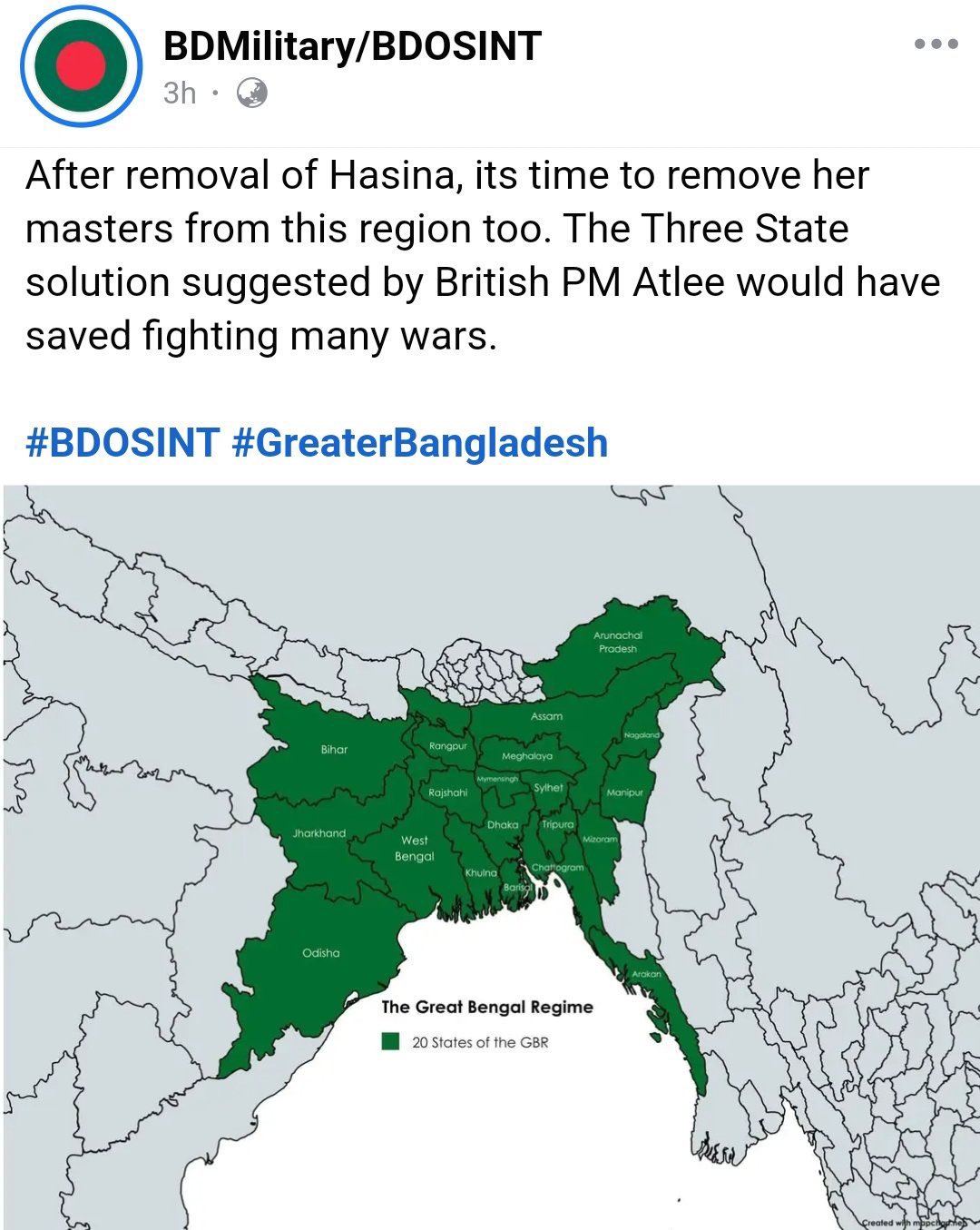SOURCE: AFI

The recent political upheaval in Bangladesh, culminating in the removal of the elected Prime Minister Sheikh Hasina, has reignited concerns about the country’s expansionist ambitions. Radical Islamist groups, now in power, have openly expressed their desire to establish a “Greater Bangladesh,” a territory that would encompass parts of India’s northeastern region.
While Bangladesh lacks the military might or resources to directly invade India, its sheer population of over 171.2 million – significantly larger than that of the entire northeastern region – poses a significant demographic threat. The proposed “Greater Bangladesh” would include West Bengal, Bihar, Odisha, Jharkhand, Sikkim, Arunachal Pradesh, Assam, Meghalaya, Tripura, Mizoram, Manipur, and Nagaland.
The history of infiltration from Bangladesh into India dates back decades. The porous border and the allure of economic opportunities have facilitated the influx of millions of Bangladeshis, many of whom have settled illegally. The secularist policies of previous Indian governments have inadvertently encouraged this influx.
In 1992, the then Chief Minister of West Bengal, Jyoti Basu, acknowledged the scale of illegal immigration from Bangladesh. He revealed that between 1977 and 1992, the Border Security Force (BSF) had identified and expelled over 235,000 Bangladeshis, including 164,132 Muslims and 68,472 Hindus. This data clearly demonstrates that the majority of infiltrators were Muslims, seeking economic opportunities rather than religious refuge.
The issue is not merely one of migration but one of demographic shifts that have the potential to influence the socio-political landscape of India’s border states. Illegal Bangladeshi immigrants have found political and economic opportunities in India, often receiving support from certain political parties seeking to expand their vote base.
The rise of Islamist forces in Bangladesh, combined with this historical infiltration, presents a significant challenge to India’s internal security. The notion of a ‘Greater Bangladesh’ may seem far-fetched militarily, but it serves as an ideological rallying point for radical elements in the region. Bangladesh’s population density, coupled with the porous borders it shares with India, provides a fertile ground for demographic and cultural influence in the bordering Indian states.
The northeastern states, already vulnerable due to insurgencies, ethnic tensions, and underdevelopment, could face additional pressures if Bangladesh’s expansionist rhetoric gains traction. States like Assam and Tripura have already seen significant demographic shifts due to illegal immigration, which has often led to ethnic and communal tensions.
Moreover, Bangladesh’s aspirations could also have wider regional implications. West Bengal, Bihar, and Odisha are crucial for India’s economic and strategic security, with Kolkata serving as a major port and the northeastern region acting as a gateway to Southeast Asia. Any destabilization in this region could have severe economic and security consequences.
While Bangladesh may lack the military capabilities to physically expand its borders, the demographic pressures it can exert on India are real and concerning. The radical Islamist takeover in Bangladesh and the revival of the ‘Greater Bangladesh’ idea should serve as a wake-up call for Indian policymakers. India must strengthen its border security, crack down on illegal immigration, and diplomatically engage with Bangladesh to ensure that these expansionist fantasies do not escalate into real threats to India’s territorial integrity. At the same time, regional cooperation must be reinforced to ensure that radical ideologies do not destabilize the delicate balance in South Asia.